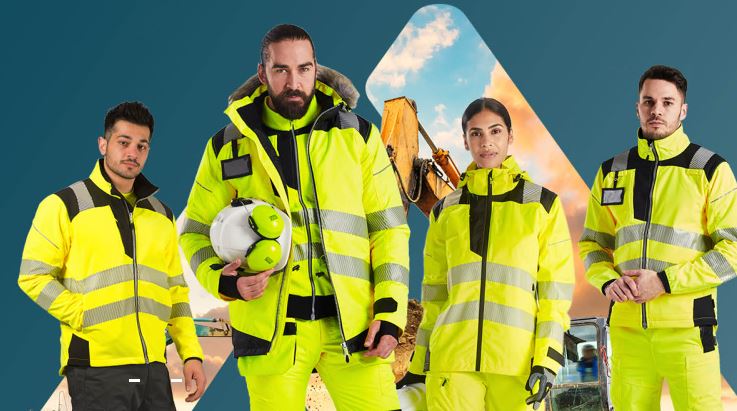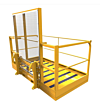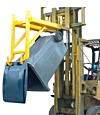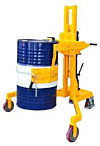
Hi vis vests are an essential component of workplace safety across countless industries in the UK. Whether you're working on construction sites, in warehouses, on roadways, or in any environment where visibility is crucial for safety, choosing the right hi vis vests can literally be a matter of life and death. This comprehensive guide will explore everything you need to know about hi vis vests, from regulations and standards to choosing the perfect vest for your specific industry needs.
Understanding Hi Vis Vests: The Foundation of Workplace Safety
Hi vis vests, also known as high visibility vests or safety vests, are specially designed garments that enhance the wearer's visibility in various working conditions. These essential pieces of Personal Protective Equipment (PPE) are engineered with fluorescent materials and retroreflective strips that make workers clearly visible to machinery operators, vehicle drivers, and other personnel, significantly reducing the risk of accidents and injuries.
The importance of hi vis vests cannot be overstated in today's industrial landscape. From construction workers navigating busy building sites to warehouse staff operating alongside forklifts, these garments serve as the first line of defense against visibility-related accidents. The bright, attention-grabbing colors and reflective elements ensure that workers remain visible even in challenging conditions such as low light, fog, rain, or dusty environments.
UK Regulations and Standards for Hi Vis Vests
In the United Kingdom, hi vis vests must comply with specific regulations and standards to ensure adequate protection for workers. The primary standard governing high visibility clothing is EN ISO 20471:2013, which replaced the previous EN 471 standard. This European standard specifies requirements for high visibility clothing, including minimum areas of fluorescent and retroreflective materials, color specifications, and performance requirements.
The regulation categorizes hi vis vests into three classes based on the amount of visible material:
Class 1 Hi Vis Vests: These provide the minimum level of visibility and are suitable for work environments where traffic does not exceed 25 mph and workers have adequate time to move away from hazards. Class 1 vests typically feature a minimum of 0.14 square meters of fluorescent material and 0.10 square meters of retroreflective material.
Class 2 Hi Vis Vests: Offering enhanced visibility, Class 2 vests are designed for work environments where traffic moves at speeds up to 50 mph. These vests require a minimum of 0.50 square meters of fluorescent material and 0.13 square meters of retroreflective material, providing greater protection in more hazardous conditions.
Class 3 Hi Vis Vests: The highest level of protection, Class 3 vests are essential for workers in high-risk environments where traffic exceeds 50 mph or where visibility is severely compromised. These vests must feature at least 0.80 square meters of fluorescent material and 0.20 square meters of retroreflective material.
Understanding these classifications is crucial for employers and safety managers when selecting appropriate hi vis vests for their workforce. The consequences of choosing inadequate protection can be severe, both in terms of worker safety and legal compliance.
The Portwest Advantage: Industry-Leading Hi Vis Vests
When it comes to hi vis vests, Portwest stands out as a leading brand in the workwear industry, offering an extensive range of high-quality, compliant safety garments. Hall-Fast, with nearly 20 years of experience in the PPE and workwear sector, has established itself as a premier supplier of Portwest hi vis vests and other safety equipment.
Since August 2006, when the company was founded, Hall-Fast has built an impressive reputation for supplying quality workwear and PPE to industries across the UK and internationally. The company's commitment to excellence and comprehensive product knowledge has made it a trusted partner for businesses seeking reliable safety solutions.
Portwest's hi vis vest collection available through Hall-Fast encompasses a wide variety of styles, classes, and features designed to meet the diverse needs of different industries. From basic Class 1 vests for low-risk environments to advanced Class 3 garments for high-hazard situations, the Portwest range ensures that every worker can find appropriate protection for their specific role.
Types of Hi Vis Vests Available
The world of hi vis vests offers numerous options to suit different working conditions, preferences, and industry requirements. Understanding the various types available can help you make informed decisions when selecting safety garments for your workforce.
Basic Hi Vis Vests: These fundamental safety garments provide essential visibility protection with fluorescent fabric and retroreflective strips. Perfect for general warehouse work, basic construction tasks, and environments where standard visibility requirements apply.
Executive Hi Vis Vests: Designed for supervisors, managers, and professionals who need to maintain a more polished appearance while ensuring safety compliance. These vests often feature more tailored cuts and may include additional pockets for tools or identification.
Mesh Hi Vis Vests: Ideal for hot weather conditions or strenuous work environments, mesh vests provide excellent airflow while maintaining visibility standards. The breathable fabric helps prevent overheating during physically demanding tasks.
Solid Fabric Hi Vis Vests: Offering durability and weather resistance, solid fabric vests are perfect for outdoor work in various weather conditions. These vests typically provide better protection against wind and light rain compared to mesh alternatives.
Long Sleeve Hi Vis Vests: For environments requiring additional arm protection or in colder conditions, long sleeve variants provide extended coverage while maintaining visibility standards.
Cooling Hi Vis Vests: Incorporating advanced cooling technologies, these specialized vests help regulate body temperature in extremely hot working conditions, making them ideal for summer construction work or industrial environments with high ambient temperatures.
Industry-Specific Applications for Hi Vis Vests
Different industries have unique requirements for hi vis vests based on their specific hazards, working conditions, and regulatory demands. Understanding these industry-specific needs is crucial for selecting appropriate safety garments.
Construction Industry: Construction workers face multiple hazards, from moving machinery to working at heights. Hi vis vests for construction typically require Class 2 or Class 3 protection, depending on the specific site conditions and proximity to vehicular traffic.
Warehouse and Logistics: In busy warehouse environments where forklifts and other equipment operate alongside pedestrian workers, hi vis vests help prevent accidents by ensuring workers remain visible to machinery operators.
Road Work and Traffic Management: Workers involved in road construction, maintenance, or traffic management require the highest level of visibility protection. Class 3 hi vis vests are often mandatory for these high-risk environments.
Rail Industry: Railway workers face unique challenges with moving trains and complex track systems. Specialized rail hi vis vests, available in the Portwest range through Hall-Fast, meet specific railway industry standards and requirements.
Emergency Services: First responders, including police, fire, and ambulance personnel, require hi vis vests that provide maximum visibility while allowing freedom of movement during emergency situations.
Aviation Industry: Ground crew and airport workers need hi vis vests that meet aviation-specific standards while providing protection in environments with aircraft and ground support equipment.
Key Features to Consider When Choosing Hi Vis Vests
Selecting the right hi vis vests involves considering multiple factors beyond basic visibility requirements. Understanding these key features can help ensure you choose garments that provide optimal protection and comfort for your workforce.
Fabric Quality and Durability: The longevity of hi vis vests depends significantly on fabric quality. Look for vests made from durable materials that can withstand regular washing, exposure to elements, and the rigors of daily use without losing their visibility properties.
Comfort and Fit: A properly fitting vest is essential for worker compliance and safety. Ill-fitting vests can restrict movement, cause discomfort, or even create additional hazards. Consider vests with adjustable features and various sizing options to accommodate different body types.
Pocket Configuration: Many workers require pockets for tools, identification, or personal items. Consider vests with appropriate pocket configurations for your specific industry needs, whether that's chest pockets for pens and cards or larger pockets for tools and equipment.
Closure Systems: From simple hook-and-loop fasteners to heavy-duty zippers, the closure system affects both ease of use and security. Choose closure systems appropriate for your working environment and user preferences.
Weather Resistance: For outdoor work, consider vests with water-resistant or waterproof properties to maintain visibility and comfort in various weather conditions.
Breathability: In hot environments or during strenuous work, breathable fabrics help prevent overheating and increase worker comfort, leading to better compliance with safety protocols.
Maintenance and Care of Hi Vis Vests
Proper maintenance of hi vis vests is crucial for ensuring continued effectiveness and compliance with safety standards. Regular care and inspection help maintain the visibility properties and extend the garment's lifespan.
Regular Inspection: Conduct regular visual inspections of hi vis vests to check for damage, wear, or degradation of fluorescent and retroreflective materials. Any vests showing signs of significant wear or damage should be replaced immediately.
Proper Washing: Follow manufacturer guidelines for washing hi vis vests. Use appropriate detergents and avoid fabric softeners that can reduce the effectiveness of retroreflective materials. Typically, washing in warm water with mild detergent provides the best results.
Drying Procedures: Air drying is generally preferred for hi vis vests, as high heat from dryers can damage retroreflective materials. If machine drying is necessary, use low heat settings and remove vests promptly to prevent damage.
Storage Considerations: Store hi vis vests in clean, dry environments away from direct sunlight and chemicals that might degrade the materials. Proper storage helps maintain the garment's protective properties between uses.
Replacement Schedules: Establish regular replacement schedules based on usage frequency and working conditions. Even well-maintained vests eventually lose their effectiveness and require replacement to maintain safety standards.
The Hall-Fast Difference: Quality, Service, and Expertise
Hall-Fast's commitment to excellence extends beyond simply supplying hi vis vests. With nearly two decades of experience in the PPE and workwear industry, the company has developed deep expertise in helping businesses select appropriate safety solutions for their specific needs.
The company's extensive product knowledge, combined with its comprehensive understanding of industry regulations and standards, makes Hall-Fast an invaluable partner for organizations seeking to improve workplace safety. Whether you're a small business looking for basic hi vis vests or a large corporation requiring specialized safety solutions, Hall-Fast's team can provide expert guidance and support.
Hall-Fast's award-winning success in both UK and international markets demonstrates the company's commitment to quality and customer satisfaction. The numerous industry awards received for international trade and business excellence reflect the company's dedication to providing superior products and services to customers worldwide.
Customization and Branding Options
Many organizations require customized hi vis vests that incorporate company branding, logos, or specific identification elements. Hall-Fast offers various customization options to help businesses create professional-looking safety garments that meet both safety requirements and corporate branding needs.
Logo Embroidery: Professional embroidery services can add company logos, names, or department identifications to hi vis vests, creating a professional appearance while maintaining safety compliance.
Printing Options: Various printing techniques allow for the addition of text, graphics, or complex designs to hi vis vests, providing flexibility in customization while ensuring visibility standards are maintained.
Color Variations: While fluorescent colors are mandated by safety standards, there are approved color options available that can help differentiate between departments, job roles, or company divisions.
Reflective Tape Configurations: Custom reflective tape patterns can be designed to meet specific visibility requirements while incorporating company branding elements.
Future Trends in Hi Vis Vest Technology
The hi vis vest industry continues to evolve with new technologies and materials designed to enhance safety, comfort, and functionality. Understanding these emerging trends can help organizations prepare for future safety requirements and opportunities.
Smart Technology Integration: Advanced hi vis vests now incorporate electronic elements such as LED lights, GPS tracking, and communication systems, providing enhanced visibility and safety monitoring capabilities.
Improved Fabric Technologies: New fabric developments focus on enhanced breathability, moisture-wicking properties, and improved durability while maintaining essential visibility characteristics.
Sustainable Materials: Environmental consciousness is driving the development of hi vis vests made from recycled materials or sustainably sourced fabrics without compromising safety standards.
Enhanced Comfort Features: Ergonomic designs and advanced materials are making hi vis vests more comfortable for extended wear, improving worker compliance and satisfaction.
Conclusion: Your Trusted Partner for Hi Vis Vests
Hi vis vests represent a critical component of workplace safety across numerous industries in the UK. From understanding regulatory requirements to selecting appropriate garments for specific applications, the importance of making informed decisions cannot be overstated.
Hall-Fast's extensive experience, comprehensive product knowledge, and commitment to customer satisfaction make it the ideal partner for organizations seeking quality hi vis vests and other safety equipment. With access to the complete Portwest range and expert guidance on product selection, Hall-Fast ensures that your workforce receives the protection they need while meeting all relevant safety standards.
For more information about Hall-Fast's comprehensive range of hi vis vests and other safety equipment, visit their website or contact their knowledgeable team. With nearly 20 years of experience and a commitment to excellence, Hall-Fast continues to be a trusted supplier of quality workwear and PPE to businesses across the UK and internationally.
Remember, when it comes to workplace safety, there are no shortcuts. Investing in quality hi vis vests from reputable suppliers like Hall-Fast ensures that your most valuable assets – your employees – remain safe and visible in all working conditions. Whatever your industry needs, Hall-Fast has the expertise and products to keep your workforce protected worldwide.












